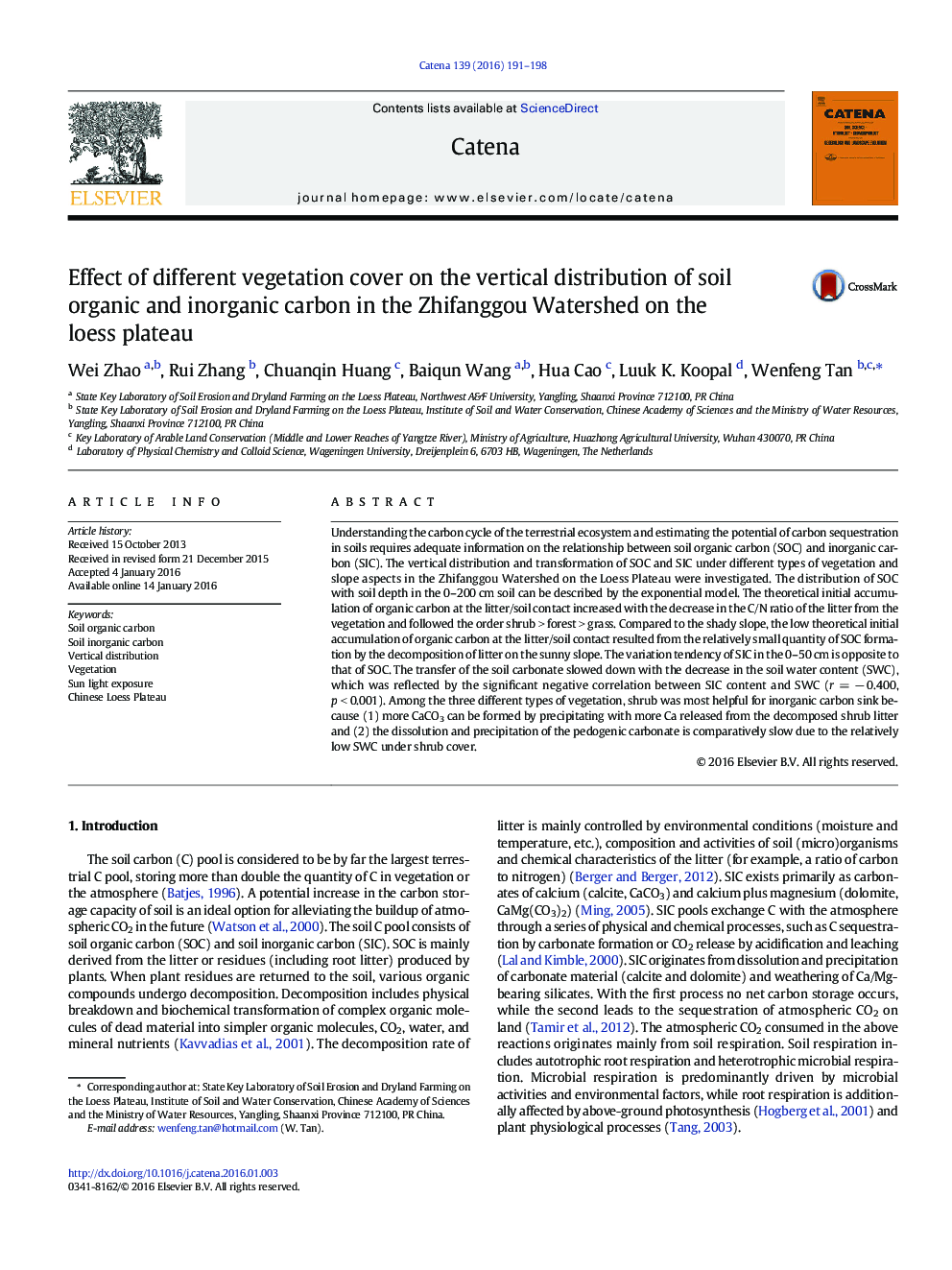| کد مقاله | کد نشریه | سال انتشار | مقاله انگلیسی | نسخه تمام متن |
|---|---|---|---|---|
| 4570955 | 1629213 | 2016 | 8 صفحه PDF | دانلود رایگان |

• Initial input of organic carbon followed the order shrub > forest > grass.
• Low C/N ratio of litter favored the input of organic carbon.
• Plant litter with low C/N ratio and high Ca content benefits inorganic carbon sink.
• Low soil water content under shrub cover led to the slow transfer of carbonate.
Understanding the carbon cycle of the terrestrial ecosystem and estimating the potential of carbon sequestration in soils requires adequate information on the relationship between soil organic carbon (SOC) and inorganic carbon (SIC). The vertical distribution and transformation of SOC and SIC under different types of vegetation and slope aspects in the Zhifanggou Watershed on the Loess Plateau were investigated. The distribution of SOC with soil depth in the 0–200 cm soil can be described by the exponential model. The theoretical initial accumulation of organic carbon at the litter/soil contact increased with the decrease in the C/N ratio of the litter from the vegetation and followed the order shrub > forest > grass. Compared to the shady slope, the low theoretical initial accumulation of organic carbon at the litter/soil contact resulted from the relatively small quantity of SOC formation by the decomposition of litter on the sunny slope. The variation tendency of SIC in the 0–50 cm is opposite to that of SOC. The transfer of the soil carbonate slowed down with the decrease in the soil water content (SWC), which was reflected by the significant negative correlation between SIC content and SWC (r = − 0.400, p < 0.001). Among the three different types of vegetation, shrub was most helpful for inorganic carbon sink because (1) more CaCO3 can be formed by precipitating with more Ca released from the decomposed shrub litter and (2) the dissolution and precipitation of the pedogenic carbonate is comparatively slow due to the relatively low SWC under shrub cover.
Journal: CATENA - Volume 139, April 2016, Pages 191–198